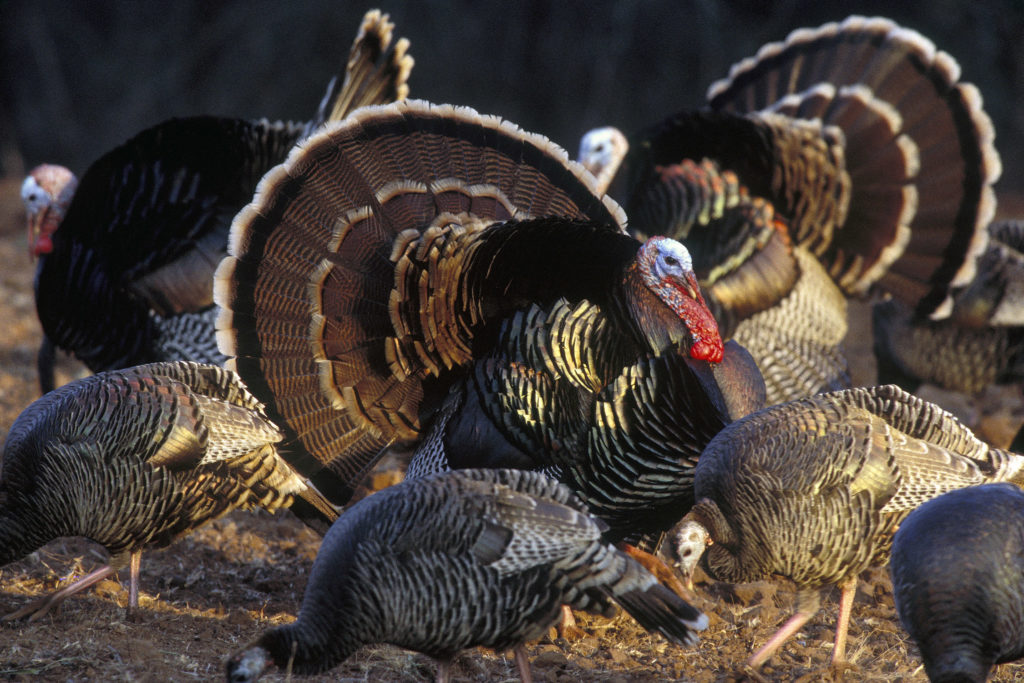In honor of Independence Day, today’s post is about turkeys, which were almost chosen as the national bird of the United States. Rio Grande wild turkeys (Meleagris gallopavo intermedia) are the most common turkey species in Texas.
A critical habitat component for turkeys is a place to roost. While all birds roost, not all do so communally. Turkeys roost communally, meaning that every night, a group of turkeys gather together to rest in a particular area. Other than nesting hens, which roost on the ground, Rio Grande wild turkeys roost in trees or on man-made structures.
When managing land for turkeys, keep in mind the availability of roost trees. Suitable roost trees have large, strong, horizontal branches. Tree structure and structure of surrounding vegetation are more important factors for roosting turkeys than the species of tree. Managers should maintain low vegetation for 100 yards around a roost tree to give turkeys “take off” and “landing” areas to enter and leave the roost.
Male Rio Grande wild turkeys will sometimes use a particular roost site all year long, but hens must adjust their roosting sites in the summer to accommodate for their young. At about 2 weeks of age, Rio Grande wild turkeys will begin to roost in trees with branches 6 to 9 feet above the ground. As the poults grow and increase their flight ability, taller trees will be used for roosting.
For more information on turkeys, check out the resources on our Turkey page. Happy Independence Day, y’all!

Rio Grande Wild Turkeys. National Wild Turkey Federation photo, Flickr, CC BY 2.0.